Yep! That’s me. It was 1994 and I was in Visalia, California shooting ground squirrels and rabbits with my brand new Remington Model 700 VSSF (Varmint Synthetic Stainless Fluted) in the speed king of factory cartridges, the .220 Swift. Although, compared to the life of the .220 Swift, we have our own history. At the time, I was a speed chaser. I started my varmint hunting career with centerfires like the .30-’06 shooting the 55 grain Remington Accelerator sabots (which had terrible accuracy) and a Model 700 in .17 Remington. I liked little bullets, going REALLY FAST and the effects they had on varmints of all sizes. From California ground squirrels, to rockchucks in the high mountains, to sniping coyotes off the snow covered fields in the dead of winter. The .220 Swift did it all and with spectacular performance and results!
History of the .220 Swift:
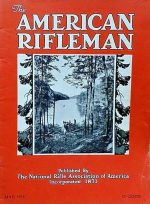 When I first started thinking about this article, I started my research from the source/time of the cartridge’s development. I am fortunate to have a complete set of American Rifleman Magazines from 1929 to 1975. All bound by year and collected by a Physician here in the Boise, Idaho area. This vast information base allows me to look at the source and not the often repeated and redacted information on sites such as Wikipedia. The May, 1935 American Rifleman has an excellent and detailed article by F.C. Ness on the .220 Swift, its development, testing and what other cartridge makers were working on at the time, that includes ballistics and photos from Captain Wotkyns himself! This full article will be reposted below so you can really dig into the meat of the creation of the .220 Swift cartridge.
When I first started thinking about this article, I started my research from the source/time of the cartridge’s development. I am fortunate to have a complete set of American Rifleman Magazines from 1929 to 1975. All bound by year and collected by a Physician here in the Boise, Idaho area. This vast information base allows me to look at the source and not the often repeated and redacted information on sites such as Wikipedia. The May, 1935 American Rifleman has an excellent and detailed article by F.C. Ness on the .220 Swift, its development, testing and what other cartridge makers were working on at the time, that includes ballistics and photos from Captain Wotkyns himself! This full article will be reposted below so you can really dig into the meat of the creation of the .220 Swift cartridge.
“I WONDER how our readers will react to a combination of American-made rifle and cartridge that gives to its .22- caliber 46-grain bullet the remarkable velocity of 4000 foot-seconds at the muzzle. That, and more, is what may be expected from a new bolt-action magazine rifle in the soon-to-be announced .220-Swift Caliber, and it requires a barrel length of only 24 inches to give such remarkable ballistics.” – F.C. Ness – American Rifleman – May 1935
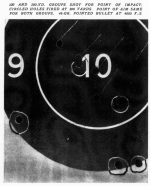 The .220 Swift has a storied history that starts with its development, then release, back in 1935 by Captain G.L. Wotkyns for the Winchester Western Cartridge Company. Captain Wotkyns decided on a 46, or 48 grain projectile that would exceed the 4000fps mark and would be intended for small game and varmint hunting. Based on the first-hand information within this article, it is clear that this cartridge was developed with varmint hunters in mind and it has stayed that way even today (87 years later). The .220 Swift cartridge was originally loaded in a short rimless case very similar to the .250 Savage case. It is necked down to accept a .224″ projectile, and pronounced shoulder bevel, which has been proven since to bring out added efficiency for these high-speed cartridges (ie: Ackley, Mashburn, etc.), using less powder for small/light projectiles. When developed, the base of the shell, in diameter and shape, was about the same as that of the .30-’06. This allowed the early testers to use rifles such as a re-barreled Springfield 1903, with no work needed on the boltface.
The .220 Swift has a storied history that starts with its development, then release, back in 1935 by Captain G.L. Wotkyns for the Winchester Western Cartridge Company. Captain Wotkyns decided on a 46, or 48 grain projectile that would exceed the 4000fps mark and would be intended for small game and varmint hunting. Based on the first-hand information within this article, it is clear that this cartridge was developed with varmint hunters in mind and it has stayed that way even today (87 years later). The .220 Swift cartridge was originally loaded in a short rimless case very similar to the .250 Savage case. It is necked down to accept a .224″ projectile, and pronounced shoulder bevel, which has been proven since to bring out added efficiency for these high-speed cartridges (ie: Ackley, Mashburn, etc.), using less powder for small/light projectiles. When developed, the base of the shell, in diameter and shape, was about the same as that of the .30-’06. This allowed the early testers to use rifles such as a re-barreled Springfield 1903, with no work needed on the boltface.
Initial testing showed amazing ballistics for the time. Not only was the 46 grain projectile traveling over 4000 fps, but your hold on a typical ground squirrel sized target would be the same from 50 yards, out to 200 yards (3″ target). Captain Wotkyns also found that gopher (ground squirrel) sized varmints could be killed by holding on the neck of the 5″ standing varmint, from 75 yards out to 250 yards (100 yard zero). This is one of the reasons I chose this cartridge for my varmint hunting back in 1994. At the time, there was no factory .224″ cartridge available that could match the speed and ballistics. Before you start shouting “What about the .22-250” at your screen, run the ballistics and you will see the difference (as slight as you may think it is).
I’m just touching on the history. I IMPLORE you to read the full article below. It is full of detailed history and facts on the development of the .220 Swift.
The Remington Model 700 VSSF:
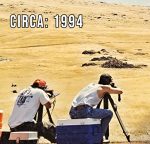 In 1994, my search for a long-range, high-speed, .224 centerfire rifle started with the best factory rifle at the time, the Remington Model 700. As I researched more, I saw the advertisements for their new line of heavy barrel varmint rifles and picked a Model 700 Varmint. It came with a HS Precision stock and an adjustable factory trigger. I placed my order and picked-up a Leupold Vari-X III in 6.5-20x44mm optic while I waited for it to arrive. After receiving it, I spent some time breaking in the rifle (shoot, clean, shoot, clean x 10, etc.) and then developed an excellent load using the 50 grain Nosler Ballistic Tip projectiles. My first big hunt trip was to the Visalia area of California. We were hunting in the hills of the Western Slope of the Sierra Nevada Mountain Range. Where farming, tall grass and rocky outcrops made for incredible varmint shooting. Temperatures during this hunt were in the 80s, so nothing too hot. We set-up next to a large canal and began popping ground squirrels and rabbits off a handful of rock outcroppings a few hundred yards away. Shooting was AMAZING, with the Nosler Ballistic Tip launching varmint after varmint up into the air! I was keeping my barrel cool and cleaning my rifle about every 50 rounds (not needed, but I had time during lulls in the shooting). Suddenly, I couldn’t hit anything! My rounds were hitting FEET away from my targets at all ranges. I was concerned that my scope mount came loose, or that the Leupold scope had failed (which has never happened to any Leupold I’ve owned). I spent quite a bit of time checking out the rifle, when I finally looked at the muzzle. I was shocked to see that the rifling inside my barrel was missing approximately 1″ of two of my lands! In layman terms, the rifling had broken off! That ended my hunt right there.
In 1994, my search for a long-range, high-speed, .224 centerfire rifle started with the best factory rifle at the time, the Remington Model 700. As I researched more, I saw the advertisements for their new line of heavy barrel varmint rifles and picked a Model 700 Varmint. It came with a HS Precision stock and an adjustable factory trigger. I placed my order and picked-up a Leupold Vari-X III in 6.5-20x44mm optic while I waited for it to arrive. After receiving it, I spent some time breaking in the rifle (shoot, clean, shoot, clean x 10, etc.) and then developed an excellent load using the 50 grain Nosler Ballistic Tip projectiles. My first big hunt trip was to the Visalia area of California. We were hunting in the hills of the Western Slope of the Sierra Nevada Mountain Range. Where farming, tall grass and rocky outcrops made for incredible varmint shooting. Temperatures during this hunt were in the 80s, so nothing too hot. We set-up next to a large canal and began popping ground squirrels and rabbits off a handful of rock outcroppings a few hundred yards away. Shooting was AMAZING, with the Nosler Ballistic Tip launching varmint after varmint up into the air! I was keeping my barrel cool and cleaning my rifle about every 50 rounds (not needed, but I had time during lulls in the shooting). Suddenly, I couldn’t hit anything! My rounds were hitting FEET away from my targets at all ranges. I was concerned that my scope mount came loose, or that the Leupold scope had failed (which has never happened to any Leupold I’ve owned). I spent quite a bit of time checking out the rifle, when I finally looked at the muzzle. I was shocked to see that the rifling inside my barrel was missing approximately 1″ of two of my lands! In layman terms, the rifling had broken off! That ended my hunt right there.
When I got home, I contacted Remington Arms. They were very apologetic and asked me to send the rifle in right away. About a week later, they contacted me to say that they were replacing the rifle. They had just released their new VSSF (Varmint Synthetic Stainless Fluted) line of rifles and offered to replace it with one of those. Of course, I said “Yes”. After receiving the new rifle, I mounted the Leupold Scope, worked up some of the same loads, then headed back to the hills for varmint hunting. This time, I had the same results as before, but it continued for the duration of the hunt. Any jitters I had about the replacement rifle were gone and I’m still shooting the same rifle, 28 years later! About a year after this hunt, I bought a new, boosted Leupold Vari-X III from company called “Premier Reticles”. The original 6.5-20x50mm was boosted to 14.5-35x50mm power with a fine crosshair installed. After I received it back, the .220 Swift became my most used cartridge/rifle for the next 10 years!
1990s-2000s Hunting With The .220 Swift:
To say it was an excellent varmint killing cartridge would be an understatement. I’m not sure what words I could use to describe the absolute, lights-out, killing power the .220 Swift had out in the field. My typical year would consist of Coyote hunting in winter, colony varmints like California and Belding’s Ground Squirrels from spring to July, then Rockchucks in the high country until late fall, or when the first snows hit.
My coyote set-up was simple. A white Tyvek suit, a pair of snowshoes and some huge open fields up in the mountainous areas of the Eastern Sierra. I would snowshoe out a few hundred yards to a fence post, then pop out my “Snipe-Sticks” on my Swift and wait for coyotes to come mousing around. My shots were typically in the 200 – 500 yard range. No cellphone ballistic programs were available at the time, but shooting them at longer distances was not an issue. The 50 grain Nosler Ballistic Tip load I had developed was right at 3950 fps (not the fastest, but the most accurate non-barrel burner) and I knew my drop. At the shot, the coyote would either drop dead, or spin a couple of times and pile up. I would mark their spot, then haul them all out at the end of the day. Back then, I was skinning them, having the furs tanned at Moscow Hide and Fur, then selling them for $75.00 each on this new website called, “E-Bay”. I also sold the skulls and claws, so a single coyote was netting me about $100.00 each! That was great money back in the mid-to-late 1990s/early 2000s.
Springtime would find me in the alfalfa fields, or orchards of the Kern County area of California. California ground squirrels are one of the largest in the USA, so taking them out with the Swift was always a spectacular matter! Days of shooting 50 to 100 ground squirrels a day was not unheard of and the farmers appreciated it. I would also stay after the evening shoot and pop the hoards of Jackrabbits that made their way over the rabbit fence from BLM land, into the alfalfa. There were some afternoons when we collectively shot dozens of Jacks without moving. Driving out was always interesting, as hundreds of them would rush the headlights of my Jeep Cherokee! It was a crazy experience I will never forget!
When the ground squirrel hunting slowed down, I would travel into the Eastern Sierra Mountain Range in California and find rockchucks to hunt. California rockchuck hunting is nothing like the rockchuck hunting we have here in Idaho. The areas to shoot were often limited by hikers, no roads and limited rockchucks. I would not hunt the areas that held only a few rockchucks, so that meant either traveling into backcountry valleys using very sketchy roads, or setting up to shoot them at longer ranges where most hunters wouldn’t even try. One memorable hunt had me shooting up a mountain at a rockchuck that was 530 yards away. I found the ‘chuck in my boosted Leupold and proceeded to make the shot. I saw the rockchuck fly off the rock into the grass, but everyone I was hunting with did not witness the hit. That meant a long hike, up a very tall mountain to retrieve it. I did and pulled out a disposable camera to capture the shot of my Jeep 530 yards below the rock. If there was any day that more solidified my choice in the .220 Swift as my go-to varminting cartridge, it was that day!
Taking the .220 Swift Hunting Almost Three Decades Later:
I moved to Idaho in 2016 and immediately started to seek out places to hunt varmints. Years of new cartridge releases and new rifles caused me to put my Remington M700 .220 Swift into the back of my safe, while I used these other “next best thing” rounds. Though many impressed me, the .220 Swift was always at the back of my mind. Everything I shot seemed to be compared to the cartridge developed back in 1934/35 and nothing matched it. Yes, I shot the .22 Nosler, the .224 Valkyrie, the .22 Creedmoor, the 6mm Creedmoor, even wildcats that pushed 32/39 grain .204 projectiles past the 4000 fps mark. None of them was the .220 Swift.
After sitting in my safe for 20 years, I took it out to check on rust, but found that the butt-pad of the HS Precision stock that came with it melted while it was sitting in my safe. This rendered the rifle useless, until I replaced the stock, or had HS Precision fix it (which they offered). However, while I was speaking with the folks at Grayboe, they mentioned their new Phoenix Rifle Stock. This really piqued my interest, because we had received some other Grayboe stocks for recent builds and they were built very well and offered a lot of options. When they heard my predicament, they offered a new Phoenix to use with my .220 Swift. Once I got the stock mounted, I could not believe the change in the look of my Remington rifle! It made a 1990s era rifle, look like it just rolled off the line of a custom rifle builder. It also felt very comfortable and allowed me to make adjustments to the cheek riser, which I was unable to do before. I was excited and ready to get this rifle out into the field again!
Early summer of 2021 had me scouting the Sawtooth Mountains here in Idaho for rockchucks. One of the other writers here on Varminter was coming for a visit and we were going to focus on rockchuck hunting, so I wanted some unique and plentiful spots for shooting. He was bringing his 6BR build and I decided that I would be shooting my Circa 1994 Remington Model 700 in .220 Swift with the Premier Reticle boosted Leupold scope. I pulled out my old load data and loaded up some fresh rounds, before taking it out and sighting it in. I was ready for some rockchuck hunting!
 A heat wave had hit the area of Idaho we planned to hunt, so our hope was that being up in the mountains was going to offer some relief. That didn’t really work out. We found ourselves really searching hard for rockchucks that just 5 days before were out in force. The first area we hunting allowed me to check my velocity to check on my velocity, then it was time to shoot some ‘chucks! The first one was on a rocky outcropping at 355 yards. It was further out, but started working its way down the rocks towards us. I was laying prone on the ground while David ran the camera. As it emerged into a clear area, I accounted for the bullet drop and made the shot. The rockchuck laid down, stone dead at the shot. The familiar tail wave was evident of a perfectly placed shot. Twenty-Seven years after buying it, the Remington .220 Swift had its first kill! The rest of the day was spent tracking down rockchucks that were still out and making/missing shots. Thankfully, my hit ratio wasn’t terrible, but it got better the more time I spent behind the rifle.
A heat wave had hit the area of Idaho we planned to hunt, so our hope was that being up in the mountains was going to offer some relief. That didn’t really work out. We found ourselves really searching hard for rockchucks that just 5 days before were out in force. The first area we hunting allowed me to check my velocity to check on my velocity, then it was time to shoot some ‘chucks! The first one was on a rocky outcropping at 355 yards. It was further out, but started working its way down the rocks towards us. I was laying prone on the ground while David ran the camera. As it emerged into a clear area, I accounted for the bullet drop and made the shot. The rockchuck laid down, stone dead at the shot. The familiar tail wave was evident of a perfectly placed shot. Twenty-Seven years after buying it, the Remington .220 Swift had its first kill! The rest of the day was spent tracking down rockchucks that were still out and making/missing shots. Thankfully, my hit ratio wasn’t terrible, but it got better the more time I spent behind the rifle.
Day two brought us back into the same general area, but this time we were hunting a ranch where we had exclusive permission from the landowner. He is a good friend of Cache Carlson, one of the other writers and we were extremely appreciative to be allowed on the ranch to help with his rockchuck infestation. After shooting the morning, we sat in a restaurant cooling off from the 90° heat outside. We debated calling it a day and going home, but instead decided to give it one more try. We were glad we did! What we found was an area where the rockchucks were eating out on a horse pasture, completely oblivious to the heat or us shooting them from a couple of hundred yards away. The .220 Swift did a great job knocking them out. It was odd, but here I was shooting something I acquired so many years ago and enjoying the flat-shooting, hard-hitting, explosive results that got me interested in the .220 Swift cartridge back then. It was a full-circle kind of day, with rockchucks being tossed and flipped right and left!
Please check out the article below for the history on this classic cartridge. It’s quite a read, but worth every moment of your time.
The Original American Rifleman Article from 1935:
4000 R-S. With the Hornet Bullet
By F. C. NESS
I WONDER how our readers will react to a combination of American-made rifle and cartridge that gives to its .22- caliber 46-grain bullet the remarkable velocity of 4000 foot-seconds at the muzzle. That, and more, is what may be expected from a new bolt-action magazine rifle in the soon-to-be announced .220-Swift Caliber, and it requires a barrel length of only 24 inches to give such remarkable ballistics. Furthermore, the free recoil in a rifle of conventional proportions and weight is less than two foot-pounds. Even with the heaviest practicable load, employing a 63-grain bullet, the recoil is but one-fifth of that developed by the .30-’06 cartridge in a rifle of the same weight. However, strong actions and cartridge cases are necessary, as pressures are probably in the neighborhood of 60,000 pounds.
Imagine having your bullets arrive at the point of aim at 100 yards with a remaining velocity of 3300 f .-s., and then striking inside of the same 3-inch circle on identically the same hold, after you have moved the target back another hundred yards! The trajectory height over 200 yards is less than two inches. If, on the other hand, you should wish to take a shot at only 59 yards, with the same hold and zero, your bullet would strike less than one-half inch above the point of aim.
Penetration Peculiar to Critical Velocities:
Another noteworthy feature of this new bullet at this ultra-high velocity is its killing-power, for on small and medium-sized animals it has the peculiar shocking effect of a blast, or a bolt of lightning. The muzzle energy developed by the 46-grain-bullet load is 1634 foot-pounds, with 1104 foot-pounds remaining at 100 yards. Such energy just about qualifies the cartridge for deer; however, the .220 Swift is intended for small game and varmints. The actual killing effect is greater than the energy figures would indicate, because of the peculiar phenomena attending the behavior of bullets at velocities above the critical level. This critical velocity-between 3600 and 4000 f.-s. at the muzzle, or 3300 to 3500 f.-s. at the striking-point-appears to impart to each separate molecule of the bullet the properties of the bullet as a whole, so that there is no tendency for the bullet to disintegrate immediately upon impact, but rather to penetrate until the velocity has been sufficiently reduced below the critical level to finally allow it to break apart. On game such as large chucks, fox, coyotes, wolves, cougar, and even-with broadside chest-cavity hits-on larger game, this peculiar delayed disintegration of the .220 Swift bullet should insure adequate penetration for maximum killing effect, although eventually the bullet quite completely blows to pieces. This is an exceptionally safe cartridge for ground shots in settled communities.
Among our popular sporting cartridges, the particular load which gives maximum penetration in mild steel is the Remington 110-grain Hi-Speed, whose open-point bullet develops 3500 f.-s. at the muzzle of a 30-inch barrel. The Western Cartridge Company manufactures such powerful loads as the .276, .300, and .375 Magnum, and in their chronograph tests, over a distance of 100 feet, they employ as a backstop a piece of 1-½-inch armor plate, on which their Magnum bullets leave only a smear. However, when they set about testing the new .220 Swift, the armor plate was damaged for the first time, because at 100 feet even the Western Hornet bullets in the new cartridge promptly buried themselves to the base in that same hard, tough armor plate; the penetration amounting to about ¾-inch with the S-form or pointed .220 Swift bullet.
Practical Accuracy Remarkable:
The photographs and ballistic data accompanying this article were all supplied by Capt. G. L. Wotkyns. The cuts of the groups speak for themselves. With his best loads Wotkyns has steadily shot into l¼ inches at 100 yards and into 3 inches at 200 yards. Of course many exceptionally small groups have also been obtained with each of the many experimental rifles. The factory tests show a steady practical spread of less than 2 inches at 100 yards, with not more than 4 ½ inches extreme spread at 200 yards. Furthermore, the factory .220 Swift cartridge, which is now quite new, is steadily showing improvement, and as ultimately developed will probably exceed anything hitherto imagined.
Practical accuracy, however, includes more than dependable grouping ability and the extremely short barrel-time of the new load means a corresponding reduction in barrel-vibration effect upon the bullet. More marked is the peculiar absence of adverse effect resulting from small errors of aim. In other words, the bullet is out of the barrel before the marksman can sway off the bullseye, giving him a higher hit-value than his aim, at the instant of let-off, would appear to justify. This feature should make the .220 Swift a marvelous target outfit for offhand shooting.
Its other advantages in practical accuracy are more obvious. Because of its constant zero, Wotkyns found that he never bad to touch the sights after once zeroing the rifle on the point of aim at I 00 yards; and because of the extremely flat trajectory he did not have to change his hold or aiming-point up to 250 yards. For example, he could hold on a gopher’s neck at all practical ranges, and he actually made 95 per cent hits on these small targets up to 250 yards. At 50 yards the bead would be hit. At 75 to 125 yards the neck and upper chest would be struck. At 150 yards the chest cavity would be the center of impact, while at 200 yards the bottom of the chest or top of the abdomen would receive the bullet. At still longer ranges the point of impact would be still lower, but the vicious .220 Swift would nevertheless kill neatly; or the cross-hairs could be shifted to the top of the head. These small ground animals as they sit erect present a vulnerable area 5 inches high and 1 inch wide.
For target shooting, the elevations required for the small 46-grain .220 Swift bullet, up to 300 yards, are less than those for the .30 caliber Ml Service bullet, according to the following table prepared by Captain Wotkyns:
Elevation for 46-grain .220 Swift Bullet
1 to 100 yds., raise 1 minute
100 to 200 yds., raise l½ minutes
200 to 300 yds., raise 2 ¼ minutes
For 600-yard target shooting Wotkyns uses a special load with the 56-grain S-form bullet, which requires an elevation raise of only 11 minutes from 300 yards to shoot steadily into the 20-inch bullseye at 600 yards. Incidentally, this is only one minute of angle more than Ml Service ammunition requires under the same conditions. More recently Wotkyns reported using a still better pointed 60-grain bullet, and getting into the 600-yard V-ring with only 10 minutes raise in elevation! He says the 56-grain pointed bullet at 3600 f.-s. muzzle velocity is a marvelous wind-bucker, and that the 46-grain Swift is a 25 per cent better wind-bucker than Hornet loads with the same bullet-which advantage does not necessarily follow velocity increase. One practical demonstration of this superior performance is the unusual success in field shooting had by Captain Wotkyns’ youthful son, who, as an unexperienced rifleman, ignored wind-deflection and bullet-drop entirely in bagging small game and vermin at all ranges with the .220 Swift.
The Cartridge:
(The following data is as originally reported by Captain Wotkyns in January-Ed.)
The .220 Swift is loaded in a short rimless case very similar to the .2 50 Savage case. It is of course necked to fit a .224-inch bullet, and perhaps has a more abrupt shoulder bevel, necessary for the complete and efficient combustion of I. M. R. smokeless powder behind the small, light bullets. The base of the shell, in diameter and shape, is about the same as that of the .30-’06, so that the .220 Swift cartridge will function in . the Springfield M 1903 action and other .30-’06 actions, without any changes to these actions. The case is made of special brass developed by the Western Cartridge Company to give extra strength, and the primer pocket takes standard commercial primers or Frankford Arsenal No. 70 primers. The factory used the W. R. A. No. 120 Staynless non-mercuric primer in their ballistic tests.
The cartridge case is 1.910 inches long, while the overall length of the cartridge with either the 46-grain or 56-grain S-form bullet is 2.360 inches. For comparison, the .250 Savage case is 1.914 inches long, while the overall length of the cartridge (with 100-grain 0. P. E. bullet) is 2.445 inches. The total shell-volume of the .220 Swift is .177 cubic inches. The seating depth of the .539-inch-long 46-grain bullet is .17 inch, while that of the .649-inch-long 56-grain bullet is .28 inch. The bullet diameter is listed as .2245 inch, which seems unduly large for small .22 bores. The neck tension gives a bullet pull of 68 pounds.
Ballistics of the First .220 Swift:
The cartridge with 46-grain bullet shows a loading density of 92 per cent with the standard charge of 35.0 grains weight of du Pont I. M. R. No. 3031. The instrumental velocity is 3900 f.-s., making the muzzle velocity 4000 f.-s. The trajectory height over 100 ·yards is 1.47 inches; over 200 yards, 1. 7 inches, and over 300 yards, 4. 7 inches.
The loading density of the cartridge with the S6-grain bullet is 87 per cent with a charge of 32.0 grains of No. 3031 powder, which develops 3485 f .-s. instrumental velocity. This heavier bullet is an excellent wind-bucker as compared with the Hornet bullet. The S-form 46-grain bullet is superior to the hollow-point Hornet bullet with its flat end, the special pointed bullet developing an average of 60 f.-s. higher velocity. Captain Wotkyns states that the Hornet bullet when reformed to an 8-caliber head shows appreciable improvement at .220 Swift velocities. Using the Western Lubaloy Hornet bullet thus altered Wotkyns made 95 per cent hits on small ground squirrels at all ranges from 25 to 250 yards. With a powder charge of 36 grains weight of No. 3031, the bullet drop he got between 100 and 200 yards was only 1.55 inches. With a moderate and convenient powder-measure charge of 33½ grains of Pyro D. G., the corresponding drop was 2.6 inches.
Some Development History:
Such experts as Dr. F. W. Mann, Charles Newton, A. 0. Niedner, Fred Adolph, and C. G. Williams have in the past experimented with various different high-velocity .22-caliber cartridges made by necking-down such cases as the .405 Winchester, .30-’06, .30-40, .32-40, .25-35, and .32-20. In these they used many weights and lengths of specially made .22- caliber jacketed bullets, with such other components as were available. The net result of all this was the Newton .22 High Power (now the .22 Hi-Power Savage) and the Baby Niedner (in the .32-20 case). It remained for Capt. G. L. Wotkyns to take advantage of modem primers and propellants and develop the popular .22 Hornet cartridge, using the .22 W. C. F. case. More recently Hervey Lovell developed a sort of Super-Hornet by necking down the .25-20 Single-Shot case. In the meantime Niedner worked on the larger .25 Remington and .25-35 Winchester cases to develop a counterpart of the .22- Hi-Power Savage, giving 3300 f .-s. muzzle velocity with the 45-grain Hornet bullet. The final result is called the .22 Niedner Magnum, and it is a beautiful cartridge, giving splendid results when loaded with the Sisk or Niedner 63-grain bullet at practically 3250 f.-s. muzzle velocity. The Niedner cartridge, as I measure it, has a case length of 1.83 inches and an overall length (as I load it) of 2.23 inches. So much for the predecessors of the new .220 Swift cartridge.
Again Capt. G. L. Wotkyns, capitalizing on previous experience and latest developments, startled the shooting world by announcing his 4000 f.-s. .22-caliber cartridge, Wotkyns based upon surely the started .250-Savage case; and Wotkyns surely started something this time. The .250 case was necked-down to .22-caliber, the shape of the Hornet bullet was altered to the improved “S form,” suitable powder and primers were found, and finally all components were assembled and the ammunition painstakingly tested in suitably converted M 1903 Springfield rifles. Wotkyns lives in California and had every assistance in the mechanical end from two riflemen friends there. One of these was Adolph Lukes a fine mechanic and toolmaker of Oakland who built the first experimental rifle for Wotkyns, using an M1 .22-caliber Springfield barrel on the Model 1903 action. The other man was J. B. Sweany, rancher and special gunsmith of Winters, California who is well known in connection with’ his work in converting other rifles to Hornet caliber. Every arm built by these two men for Wotkyns’ experiments was thoroughly successful.
The experiments continued for months, and were a very important and necessary part of the development of the .220 Swift. It was a case of progressive elimination, for at these critical velocities many standard components failed completely, while others fell down in one way or another.
Wotkyns found tin-incorporated propellants like I. M. R. No. 17½ to be impracticable, because they caused excessive metal-fouling under the new _cond1t1ons. Nitrocellulose powders also left a gummy residue which affected accuracy and was bard to scrub out. The best of the lot was the old familiar Pyro D. G. The only practicable I. M. R. powder of the old order was No. 1185, which served until a better one was found. This No. 1185 required an abrupt shoulder-bevel in the case, and a Lubaloy jacket on the bullet. Wotkyns found that no suitable doublebase powder was available. Finally, he obtained the perfect nitrocellulose powder for the purpose in the new du Pont I. M. R. No. 3031. This was cool-burning, uniform in combustion and pressure, and left no varnish-like residue or metallic deposit in the bore when Western Lubaloy bullets were used.
Wotkyns found copper jackets to be unsuitable because of the peculiar affinity of the copper for the steel of the barrel, which resulted in a welding of the copper to the steel at the ultra-high velocities. The best and only successful jacket material, he proved to his satisfaction, was Western Lubaloy. While he obtained the very best results from his special heavy Winchester “sniper’s” barrel, Wotkyns found the standard MI Springfield and M-54 Winchester barrels to be entirely practicable. These proved very accurate and constant in zero, especially when the forestock was freed so that the barrel was full-floating. He sees a definite advantage in the Winchester 6-groove narrow-land rifling system for .220 Swift velocities. Sweany’s experiments seem to agree with those of Wotkyns, but he prefers heavier barrels. That is logical, because, everything else equal, the heavier the barrel the better the accuracy and the more constant the zero. Finally, Wotkyns found evidence of but negligible erosion and wear, which predicts a long barrel-life for the .220 Swift. In two of his barrels more than 3000 rounds have been fired, and be reports the barrels as shooting better than ever. Wotkyns considers Western and W. R. A. cases best for the .220 Swift.
Reloading Possibilities:
The fact that the primer pocket of the .220 Swift case accommodates the No. 120 W.R. A. Staynless primer, means that the F. A. No. 70 and Remington No. 8½ Kleanbore primers can also be used. All of these are non-mercuric and spell a long life of usefulness for the shells, in view of the excellent design, material, and workmanship which go into the latter. Because in size and shape this case so closely resembles that of the .250 Savage, any .2 50 cases one might have on hand could be readily converted in suitable dies.
The power and pressure range for .220 Swift handloads is wide and flexible. The velocities may be varied from 1000 f .-s. to four times that, to satisfy various requirements. For loads in the lower-pressure brackets, any .22-caliber lead-alloy or jacketed bullets may be employed with such powders as S. R. No. 80, I. M. R. No. 1204, Hercules No. 2400, and HiVel No. 3.
Notes from the Firing-Line:
I did not learn of all these interesting developments until last fall, but I have been in constant communication with either Sweany or Wotkyns ever since then. Every letter I received from them was enthusiastic, and chock-full of most interesting dope. About the middle of November I ordered a National Match action and a 7¼-pound 28-inch Winchester heavy barrel blank, and bad them shipped to Sweany to be assembled into one of the new rifles, a complete set of Sweany reloading tools being ordered at the same time. However, things were moving so fast on the Wotkyns firing-line that final chambering was held up pending further developments.
In December a letter from Wotkyns contained the following interesting remarks: “The long .30-’06 case cannot produce the efficient results attained by the smaller case, nor can it produce uniform velocities, because high loading density is an inescapable requirement, and in the .30-’06 case such density will mean a big waste of gas, loud report, and added recoil and flame.” “A charge of 36 grains No. 3031 and the 46- grain Western Open-Point Hornet bullet in the little .250-.220 case gave the same penetration in tough plate at 60 feet as did the same slug in the .30-’06 case loaded with 45 grains of the same powder. With the 51-grain S-form bullet it took 44 grains of powder in the long case to equal a 36-grain load in the short case. In this cartridge business, size means power only when things are kept balanced; otherwise it means just the reverse.”
Three weeks later Sweany wrote me along the same lines, as follows: “The .250 case is a mighty efficient one, but the speed is surpassed in my special 7-mm. case (described below), and I would judge the pressures to be lower. The .30-’06 case necked to .22 left a lot of powder space even with a load pretty close to maximum. So I made a case .470 inch at the base, .420 inch at the shoulder, and with the Springfield slope of 17 .5° , to hold just 45 grains of powder. 42 grains of No. 3031 seemed to do the same in this case as 45 grains in the .30-’06 case. Then I made a second cartridge of the 7-mm. to its exact dimensions and necked it for the .22 bullet. (The 7-mm. ‘as is’ can be made to hold just about 42 grains.) Both cases gave excellent accuracy and both gave me a drop of from ¼ inch to 1 inch from 100 to 200 yards with the Western 0. P. E. 46-grain bullet. I tried to make No. 1185 work in the 7-mm. case, but failed because of metal-fouling destroying accuracy after 5 or 10 shots.”
Though Wotkyns proved that for this work the neck-down .250 Savage case is more efficient than the necked-down .30-’06 and 7-mm. cases, I am interested in trying these larger shells and am having my rifle chambered for one of them.
Sweany’s tests in several rifles and with hundreds of loads indicate an improvement on the original factory .220 Swift described in this article. However, there may be a change in factory specifications, and no one yet knows the final answer-which is to be announced later. Sweany will be prepared to chamber rifles and furnish loading tools for his special cartridge, and J. Bushnell Smith will be prepared to furnish ammunition for shooters not interested in handloading. At present Sweany calls his cartridge the .22 x 55, because the case is 55-mm. long. Interesting extracts from his last letter (dated April 1st) concerning the most recent developments are as follows:
“The results from the .22 x 55 are superior to anything else so far. In a direct test with the .220 Swift the .22 x 55 gave about l¼ inches drop (between 100 yards and 200 yards) with 39 grains No. 3031 and Winchester 45-grain bullet, as against about a 3-inch drop with 36 grains No. 3031 in the .220 Swift. The Sisk 55-grain bullet indicated a 1 ¼-inch drop with 31 grains of powder in the .220 Swift, while in the larger .22 x 55 case 37 grains shows a I -inch drop. Same pressure in each case. The Sisk bullet is not made of the proper jacket material to stand these high speeds, and quickly metal-fouls a barrel. This does not happen with Winchester or Western bullets (Lubaloy or gilding metal).
“Pressure indications are lower and extraction is easier in the .220 Swift and .22 x 55 at the same high velocities as compared with the larger 7-mm. and .30-’06 cases necked-down. Bill Lewis was here yesterday and we spent several hours reviewing results and a lot of targets fired from all chambers and cases, and both concluded the .22 x 55 was by far the best case to adopt. Conditions may change again with improved powders, although our tests included such special propellants as I. M. R. No. 4064 and No. 4198. Expect to ship your gun next week.”
All this is very interesting, but let me say in conclusion that, while I have myself chosen the Sweany .22 x 55, I do not necessarily recommend it in preference to the factory .220 Swift. The final .220 Swift cartridge as developed in the ballistic laboratory of a great arms manufacturer is certain to be an excellent cartridge. Private experimenters can only make discoveries, inject new ideas, and open new fields: the actual work of development must be left to trained engineers in properly equipped experimental laboratories organized and established, at great expense, for that special purpose.
- Winchester XPert Rifle in 17WSM – A Summary of an Upcoming Review - September 16, 2025
- Sierra Bullets are Now Selling the .224″ – 69 Grain Blitzking - September 16, 2025
- Yes, 17 WSM Ammunition is Available! - September 5, 2025

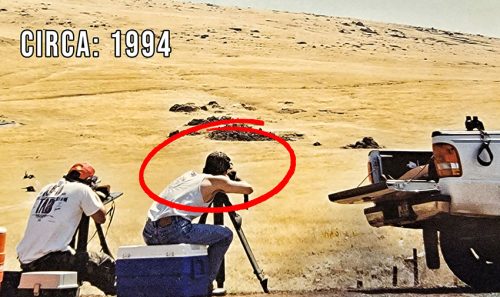
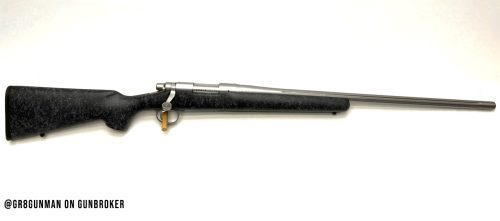
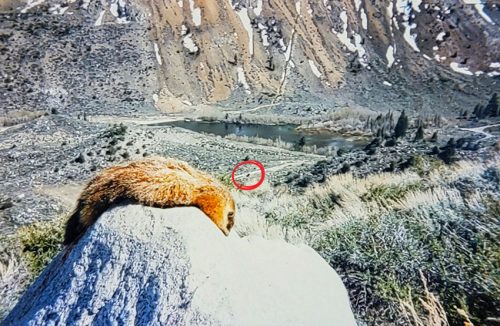
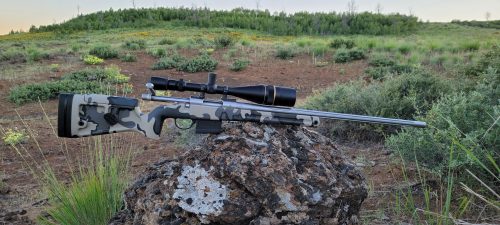
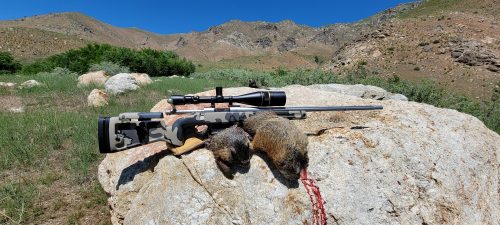
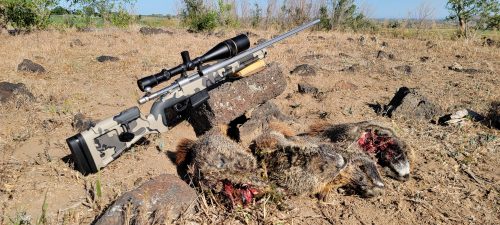
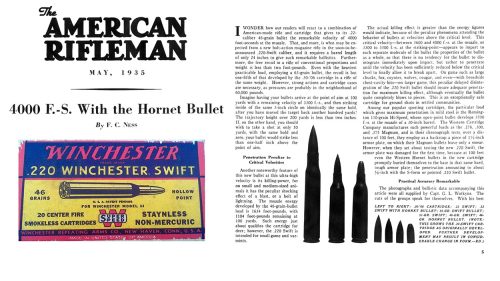
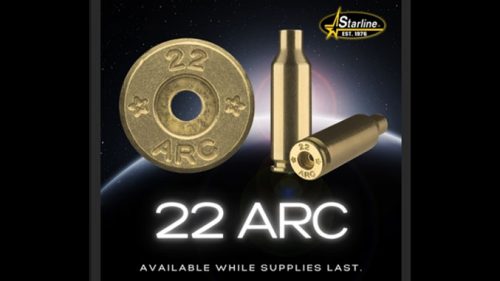

Leave a Reply
You must be logged in to post a comment